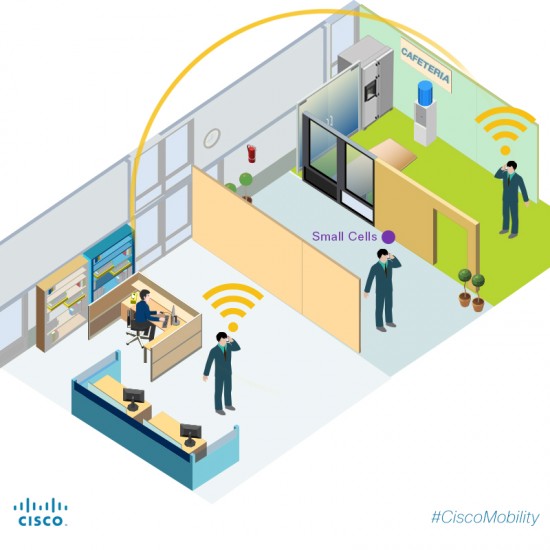































As an industry, we are starting to see a convergence of small cells and Wi-Fi to help solve coverage, capacity, and spectrum issues in our increasingly connected, mobile-dominated world. Today more than ever, mobile operators are increasingly realizing that Wi-Fi and small cells must be part of their traditional licensed network in order to realize the future of mobility.
This topic was especially evident during last month's Small Cell Americas conference in Dallas, Texas. During the conference, I had the opportunity to discuss how small cells and Wi-Fi can work together, which proved especially timely as the Dallas conference also marked the launch by the Small Cell Forum of their Enterprise Release, comprising of 25 documents to help overcome barriers to small cell deployment in the enterprise. Release Two: Enterprise is the result of over nine months of hard work by the Forum and its members!
As small cells and Wi-Fi bring corporate networks and mobile networks closer to each other, IT leaders and service providers are increasingly asking questions about how the convergence of small cells and Wi-Fi coexist, from a product, architecture and business model perspective. Some common questions include:

While this concept of small cells and Wi-Fi convergence is relatively new, and ideas about business models are evolving, one thing remains clear: heterogeneous network scenarios that deliver true mobility in a way that is meaningful to all mobile users (good voice service and guaranteed connectivity) are those that will seamlessly integrate licensed and unlicensed access through a converged network architecture. This means small cells and Wi-Fi have a place within the enterprise as a way to successfully meet current mobile demand -now and in the future.
The path to follow requires a good understanding of the marketplace, technical capabilities, and overall economics. Deploying large numbers of Wi-Fi and small-cell locations and the operational requirements of integrating the two types of networks will present challenges. However, given the huge demand for everything mobile and the fundamental shifts in the marketplace, there is no doubt that there is plenty of opportunity for all players. The key to success lies in having the right vision, creativity, and technical and operational excellence to claim the prize of profiting from the explosive growth in mobility.
Please join me in London at Cambridge Wireless Small Cell SIG event on January 21 as I share more of my thoughts about small cells within the enterprise. Specifically, I'll discuss the increasingly growing need for enterprise small cells, especially as enterprises adopt BYOD policies and strive to deliver superior mobile experiences within the workplace.
Join the conversation, follow @CiscoSPMobility on Twitter,#FutureofMobility.
Additional Information:
 Tags quentes :
Mobilidade
Service Provider
Telemóvel
Wi-Fi
wireless
service providers
small cell
Redes
Small Cells Big Thinkers
Tags quentes :
Mobilidade
Service Provider
Telemóvel
Wi-Fi
wireless
service providers
small cell
Redes
Small Cells Big Thinkers